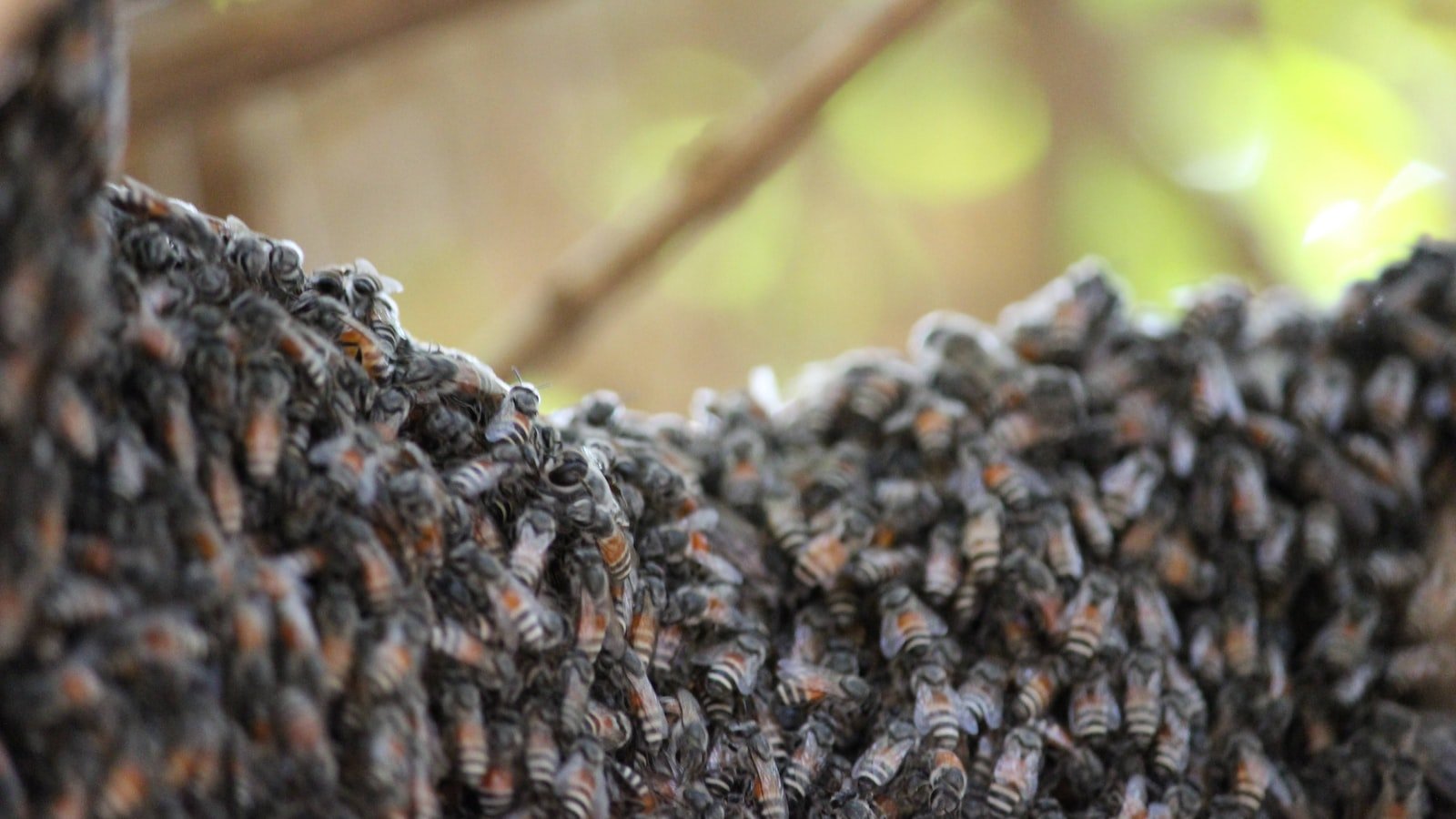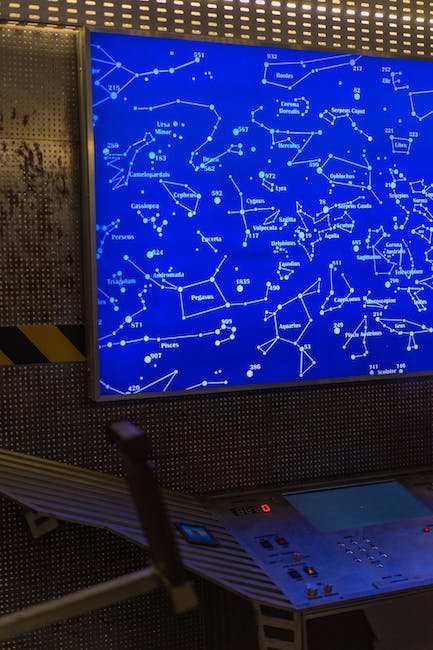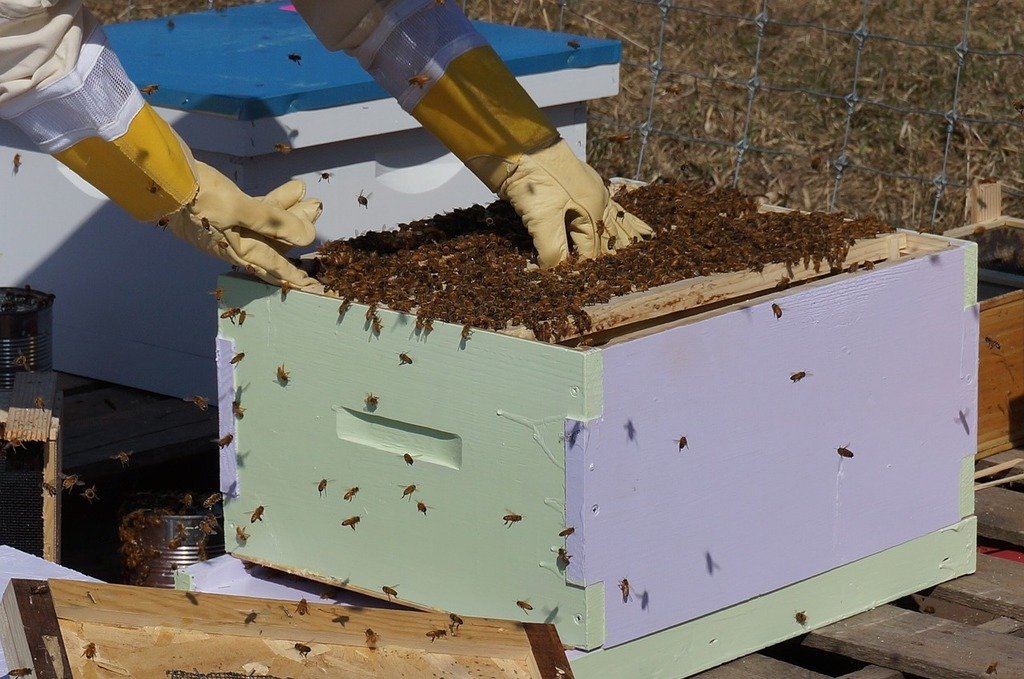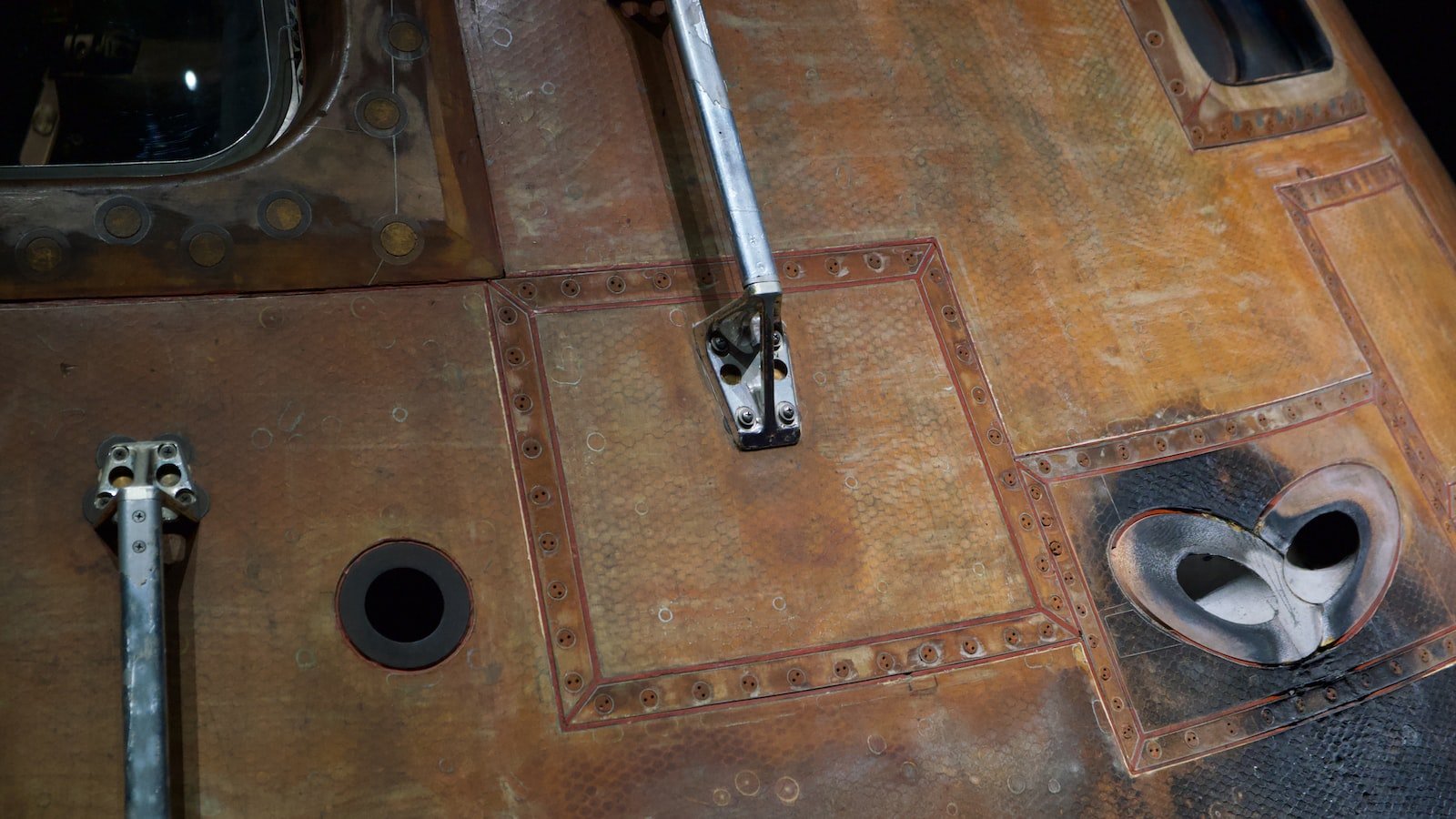Floating amongst the twinkling stars and vast darkness of the cosmos, the idea of beekeeping seems like an improbable concept to fathom. Yet, in the quest for galactic exploration, this seemingly earthly practice has found its way into the realm of space. As astronauts venture further into the unknown, scientists and researchers have begun to unravel the potential role beekeeping could play in unraveling the mysteries of space exploration. With its ability to unlock crucial solutions for sustaining life beyond our planet, beekeeping emerges as a revolutionary and unexpected ally, casting its hum upon the future of extraterrestrial expeditions.
Table of Contents
- The Miraculous Honeybees: Unsung Heroes of Space Exploration
- Enhancing Food Production and Sustainability in Extraterrestrial Habitats
- Benefits and Challenges of Beekeeping in Space Stations
- Recommendations for Future Integration of Beekeeping in Space Missions
- Exploring the Potential Medicinal and Therapeutic Uses of Space Honey
- Q&A
- Insights and Conclusions

The Miraculous Honeybees: Unsung Heroes of Space Exploration
Honeybees, those tiny yet extraordinary creatures, play an unexpected role in the pursuit of space exploration. These buzzing marvels have long been recognized for their astounding ability to navigate through vast distances with pinpoint accuracy. Interestingly, their unique skills have captured the attention of scientists and engineers, leading to ingenious applications in the world of space travel.
One of the most remarkable attributes of honeybees is their intricate communication system. Through dance-like movements called the “waggle dance,” they convey vital information to their hive-mates about the direction, distance, and quality of food sources. Inspired by this phenomenon, researchers have developed advanced algorithms that mimic this ingenious communication method for interstellar navigation. By applying these algorithms to satellites, scientists hope to improve navigation systems in space, enhancing our understanding of distant celestial bodies.
Moreover, honeybees’ ability to adapt to challenging environments has also captured the attention of space agencies. These amazing insects can comfortably withstand extreme temperature fluctuations, high levels of radiation, and even zero gravity conditions. As a result, scientists are studying honeybee physiology and exploring ways to protect astronauts from the harmful effects of space radiation. Additionally, the exceptional pollen-collecting capabilities of honeybees have sparked interest in developing robotic pollinators for future space agriculture, facilitating sustenance during long-duration missions beyond Earth.

Enhancing Food Production and Sustainability in Extraterrestrial Habitats
In our quest to explore and colonize extraterrestrial habitats, ensuring sustainable food production becomes paramount. The challenges faced in such environments are unique and require innovative solutions that promote self-sufficiency and long-term viability. By leveraging advanced technologies and sustainable farming practices, we can maximize food production efficiency while minimizing resource consumption.
One strategy for enhancing food production in extraterrestrial habitats is vertical farming. This revolutionary technique involves growing crops in vertically stacked layers, optimizing space utilization and enabling year-round cultivation. With the integration of smart irrigation systems and precise nutrient delivery, we can ensure efficient water usage and minimize fertilizer wastage, reducing the ecological footprint.
Furthermore, diversifying the types of crops grown can enhance sustainability. Incorporating a variety of edible plants, from leafy greens and grains to fruits and vegetables, not only provides a balanced diet but also helps create a robust ecosystem. By embracing a polyculture approach, where different species interact symbiotically, we can promote natural pest control, nutrient cycling, and overall ecosystem stability.
- Vertical farming maximizes space utilization and enables year-round cultivation.
- Smart irrigation systems minimize water wastage and ensure efficient water usage.
- Diversifying crops enhances sustainability and creates a balanced ecosystem.

Benefits and Challenges of Beekeeping in Space Stations
Beekeeping in space stations offers numerous benefits and presents exciting challenges for future space exploration. Let’s explore the advantages and obstacles of this remarkable endeavor:
Benefits:
- Pollination: Bees play a critical role in pollinating plants, ensuring the growth of fresh food in space. Their ability to transfer pollen from flower to flower will aid in sustaining a self-sufficient ecosystem within space stations.
- Honey Production: Bees are natural honey producers, and on space stations, they can provide a valuable source of nutrition and sweeteners, reducing the dependency on Earth for such supplies.
- Purifying the Air: Bees are incredible air purifiers, maintaining high-quality air within confined spaces. Their constant fluttering will help improve air circulation and filter out pollutants.
- Psychological Benefits: The presence of bees in space can have positive effects on astronauts’ mental well-being, providing a connection to nature and a sense of companionship amidst the vastness of space.
Challenges:
- Microgravity: Adjusting to a microgravity environment poses a significant challenge for bees. Their movements and mating behaviors need to be adapted to thrive in such conditions.
- Space Limitations: Space stations have limited space available, necessitating the development of compact and efficient beehives that can house and support bee colonies in a confined area.
- Health and Safety: Maintaining the health and safety of both the bees and astronauts is crucial. Developing protocols to prevent bee-related accidents and addressing any allergic reactions or containment issues is of utmost importance.
- Interactions with Other Systems: Managing the interactions between beekeeping systems and other vital systems, such as life support and electrical systems, requires careful planning to ensure seamless integration.
While beekeeping in space stations brings forth unique benefits and challenges, it opens up thrilling possibilities for sustainable food production, psychological well-being, and exploration beyond our planet’s boundaries.

Recommendations for Future Integration of Beekeeping in Space Missions
In order to successfully integrate beekeeping in space missions, several key recommendations need to be considered:
- Research and Development: Extensive research and development should be conducted to understand the behavior of bees in microgravity environments. This includes studying their adaptability, foraging patterns, communication, and reproduction. Understanding these aspects will aid in creating suitable habitats for bees and ensuring their overall well-being during space missions.
- Habitat Design: Designing an optimized beehive for space missions is crucial. The habitat should be lightweight, compact, and easily adjustable to varying environmental conditions. It should provide ample space for the bees to fly and access nectar sources. Additionally, it should incorporate systems for waste management and honey extraction, all while minimizing any potential risks or hazards.
- Food and Nutrition: Bees rely on a diverse range of floral sources for their nutrition. It is important to establish self-sustaining ecosystems within the spacecraft that cultivate various plants, allowing the bees to forage and pollinate. Regularly monitoring and replenishing these food sources will ensure that the bees receive a balanced diet, resulting in healthier colonies.
- Training and Monitoring: Astronauts involved in space beekeeping must receive adequate training on bee handling and maintenance procedures. Monitoring systems should be in place to constantly assess the conditions within the beehive, including temperature, humidity, and CO2 levels. Astronauts should be equipped with protective gear specifically designed for beekeeping in space to minimize risks and allergic reactions.
- Environmental Considerations: Careful consideration should be given to the impact of bees on other organisms and equipment within the spacecraft. Measures should be implemented to prevent bees from accessing sensitive areas and ensure their natural behaviors do not interfere with vital systems. Adequate waste management systems must be in place to handle bee droppings and maintain cleanliness.
By implementing these recommendations, the future integration of beekeeping in space missions can pave the way for sustainable agriculture and contribute to scientific research, while providing astronauts with a connection to nature and enhancing their overall well-being during long-duration space travel.
Exploring the Potential Medicinal and Therapeutic Uses of Space Honey
When it comes to unconventional sources of medicine, space honey might not be the first thing that comes to mind. However, recent research has shown that this extraterrestrial delicacy has a plethora of potential medicinal and therapeutic uses.
One of the most intriguing aspects of space honey is its unique composition. Studies have revealed that it contains a wide range of bioactive compounds that are not found in traditional honey. These compounds have shown promising results in various therapeutic applications such as wound healing, immune system modulation, and even anti-aging effects.
The anti-inflammatory properties of space honey make it a fascinating candidate for treating chronic inflammatory conditions. Initial studies suggest that it may help alleviate symptoms of arthritis, asthma, and other autoimmune disorders. Additionally, its antioxidant properties could potentially aid in preventing or reducing the damage caused by free radicals in the body.
Moreover, space honey has been found to have antimicrobial properties, making it a potential natural alternative to antibiotics. Studies have shown that it exhibits strong antibacterial activity against various strains, including drug-resistant ones. This opens up exciting possibilities for the development of new antimicrobial treatments that could help combat the rising issue of antibiotic resistance.
Aside from its direct medical applications, space honey has also shown promise in the field of skincare. The unique blend of compounds found in this honey has been found to have moisturizing, soothing, and rejuvenating effects on the skin. From reducing signs of aging to treating skin conditions such as eczema and acne, space honey is making waves as a novel ingredient in the cosmetics industry.
As research in this fascinating field continues to unfold, the potential medicinal and therapeutic uses of space honey are becoming increasingly apparent. From chronic illness management to skincare innovation, this extraterrestrial nectar holds the promise of revolutionizing the way we approach healthcare. So, keep a keen eye out for the space honey products of the future, as they might just be the key to a healthier and more beautiful life.
Q&A
What is beekeeping in space exploration?
Beekeeping in space exploration refers to the practice of raising bees in a controlled environment in space to study their behavior and potential contributions to future space missions.
Why is beekeeping being explored in space exploration?
Beekeeping in space exploration could provide valuable insights into the effects of microgravity on bee colonies and the potential for honey production in space, which could be a sustainable food source for astronauts on long missions.
What are the challenges of beekeeping in space?
Beekeeping in space presents unique challenges such as creating an artificial hive environment, ensuring bees’ well-being in microgravity, and managing potential risks of stings and hive maintenance without gravity assistance.
What benefits could beekeeping in space offer?
Beekeeping in space may offer benefits like understanding the impact of microgravity on bees’ communication and navigation abilities, potentially leading to technology advancements, and providing a sustainable food source through honey production.
How have bees been successful in space?
Bees have displayed remarkable adaptability in space, successfully navigating microgravity environments, building comb structures, and even mating. These successes highlight the potential for bees to thrive and contribute to future endeavors in space exploration.
What experiments have been conducted regarding beekeeping in space?
Scientists have conducted experiments involving bees in microgravity, exploring their behavior, communication, navigation, and honey production. These experiments aim to understand the challenges and potentials of beekeeping in space exploration.
What are the implications of beekeeping in space exploration for humans?
Beekeeping in space could provide insights into how humans may adapt and sustain life in confined and challenging environments, inspiring innovative solutions for future space missions and leading to advancements in the fields of agriculture and environmental research.
What is the future of beekeeping in space exploration?
The future of beekeeping in space exploration is still uncertain, but researchers continue to study and improve upon the challenges. The potential contributions of bees to sustainability and technology in space make this an exciting area of research for the future of space exploration.
Insights and Conclusions
As the vast reaches of outer space beckon us with endless mysteries and possibilities, the role of beekeeping in space exploration stands as a testament to the ingenuity and adaptability of the human spirit. Over the course of this article, we have delved deep into the extraordinary journey of honeybees venturing far beyond the confines of Earth. From the honeycombs of terrestrial hives to the vast expanse of the cosmos, these resilient creatures have proven to be our steadfast companions in the exploration of the unknown.
One cannot help but marvel at the extraordinary symbiotic relationship that has developed between humankind and honeybees over the centuries. From providing us with golden honey to pollinating our crops, bees have long played an indispensable role in our lives. And now, as we set our sights on celestial wonders, they have once again captured our imagination and ignited our curiosity.
Imagine, if you will, a beehive floating gracefully amidst the stars, its inhabitants buzzing with purpose and resolve. Through careful experimentation and innovative techniques, scientists have successfully trained bees to adapt to the challenges of space travel. Buzzing within the confines of specially designed hives, these tiny astronauts have not only survived but thrived in the unforgiving environment of the cosmic void.
But what purpose could bees possibly serve in the depths of space? The answer lies in their unrivaled ability to pollinate. With the scarcity of natural pollinators in extraterrestrial environments, the presence of bees becomes all the more crucial. These extraordinary creatures, armed with their meticulous instincts, can potentially bring life to barren celestial bodies, paving the way for future colonization and sustaining human presence.
The significance of beekeeping in space exploration extends far beyond practicality. It captures the quintessence of our innate curiosity, the unyielding spirit that drives humanity to push the boundaries of knowledge. Beekeeping allows us to peer into the unknown, to gaze upon a future where human life flourishes among the stars. It is a testament to our capacity for innovation and the profound ways in which we can glean inspiration from the natural world.
As we conclude this exploration of the role of beekeeping in space, let us hold onto the sense of wonder that fills our hearts. The buzzing of bees among the cosmos reminds us that, in our relentless quest to understand the universe, we are bestowed with partners who have accompanied us throughout our history. May our fascination with these remarkable creatures propel us forward, to boldly go where no honeybee has gone before.
As an affiliate, my content may feature links to products I personally use and recommend. By taking action, like subscribing or making a purchase, you’ll be supporting my work and fueling my taco cravings at the same time. Win-win, right?
Want to read more? Check out our Affiliate Disclosure page.